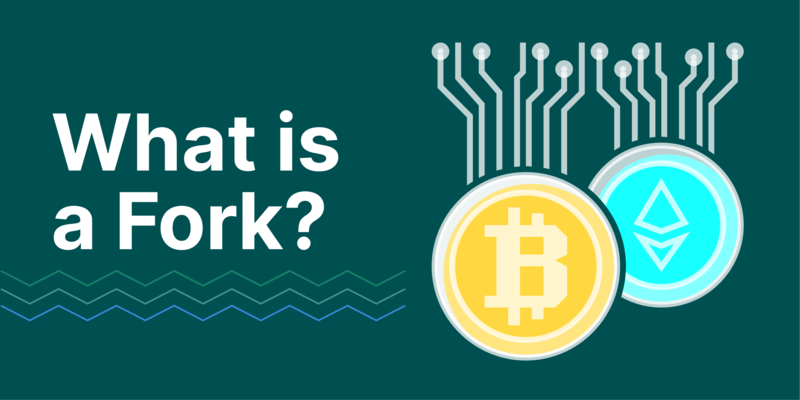In the rapidly evolving landscape of cryptocurrencies, the term “fork” frequently appears, often generating confusion among both novice and experienced investors. This article delves into the concept of forks in cryptocurrency, exploring their types, implications, and significance within the crypto ecosystem.
What is a Cryptocurrency Fork?
A cryptocurrency fork refers to a divergence or split in the blockchain of a digital currency. This split occurs when there is a change or upgrade to the protocol that governs how the blockchain operates. Essentially, a fork creates two separate chains that can run simultaneously, each following different sets of rules.
Forks can be categorized into two main types: soft forks and hard forks.
Soft Forks

Soft forks are backward-compatible changes to the blockchain protocol. This means that nodes (computers participating in the network) running the new protocol can still interact with nodes running the old protocol. Soft forks are typically used for minor updates or improvements that do not disrupt the overall functioning of the network.
A well-known example of a soft fork is the Bitcoin Segregated Witness (SegWit) upgrade. SegWit was introduced to increase Bitcoin’s transaction capacity by separating the signature data from the transaction data. This upgrade aimed to improve scalability and reduce transaction fees without requiring a complete overhaul of the Bitcoin network.
Hard Forks
Hard forks, on the other hand, are not backward-compatible. This means that once the fork occurs, nodes running the old protocol cannot interact with those running the new protocol. Hard forks often result in the creation of a new cryptocurrency, as the blockchain splits into two distinct chains with different rules.
An iconic example of a hard fork is the split between Bitcoin and Bitcoin Cash in August 2017. The Bitcoin Cash hard fork was implemented to increase the block size limit from 1 MB to 8 MB, aiming to enhance transaction speed and reduce fees. As a result, Bitcoin Cash emerged as a separate cryptocurrency with its own blockchain.
Why Do Forks Happen?
Forks can occur for various reasons, including:
- Protocol Upgrades: Developers may introduce forks to implement new features or improvements to the existing blockchain protocol. These upgrades can address scalability issues, enhance security, or add functionality.
- Disagreements within the Community: Sometimes, disagreements among developers, miners, or community members about the direction of a cryptocurrency can lead to a hard fork. These disagreements can be based on differing opinions on protocol changes, governance models, or other critical aspects.
- Security Concerns: Forks can be initiated to address security vulnerabilities or bugs in the existing blockchain. By implementing a fork, developers can mitigate potential risks and enhance the overall security of the network.
Implications of Forks
Forks have several implications for the cryptocurrency ecosystem:
- Market Impact: Forks can lead to significant price fluctuations and market volatility. When a well-known cryptocurrency undergoes a fork, it can create uncertainty among investors, leading to price swings for both the original and the newly created cryptocurrencies.
- Community Dynamics: Forks often result in a divided community. Some members may support the original cryptocurrency, while others may back the new fork. This division can impact the development and adoption of both cryptocurrencies.
- Technical Challenges: Implementing a fork can present technical challenges, including compatibility issues, bugs, and potential disruptions to the network. Ensuring a smooth transition requires careful planning and coordination among developers and stakeholders.
- New Opportunities: Forks can create new opportunities for investors and developers. The emergence of a new cryptocurrency can offer investment potential and drive innovation in the blockchain space. For developers, forks provide a chance to experiment with new ideas and solutions.
The Future of Forks in Cryptocurrency

As the cryptocurrency industry continues to evolve, forks are likely to remain a prominent feature of the ecosystem. The introduction of new technologies, changes in market dynamics, and shifts in community preferences will influence the frequency and nature of forks.
It is essential for investors and participants to stay informed about upcoming forks and their potential impact on the market. Understanding the reasons behind a fork, its technical details, and its implications can help individuals make informed decisions and navigate the complexities of the cryptocurrency world.
In summary, cryptocurrency forks represent a crucial aspect of the blockchain ecosystem, enabling upgrades, addressing community disagreements, and creating new opportunities. Whether through soft forks or hard forks, these splits play a significant role in shaping the future of digital currencies.
By grasping the concept of forks and their implications, individuals can better navigate the ever-changing landscape of cryptocurrencies and make informed choices in their investment and involvement with blockchain technology.
